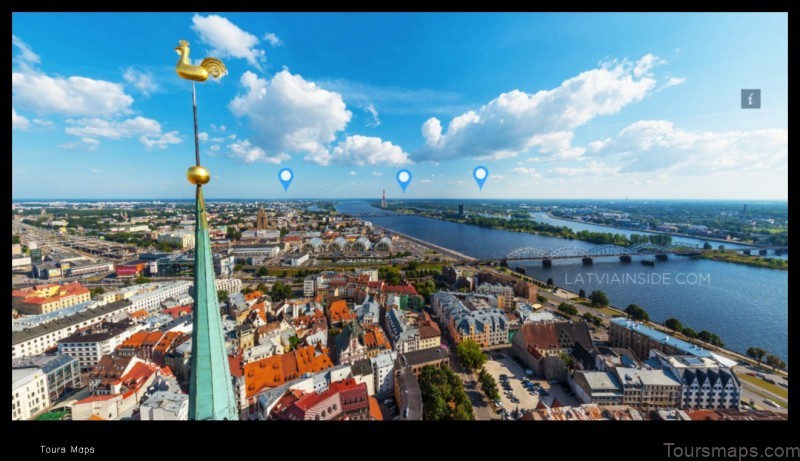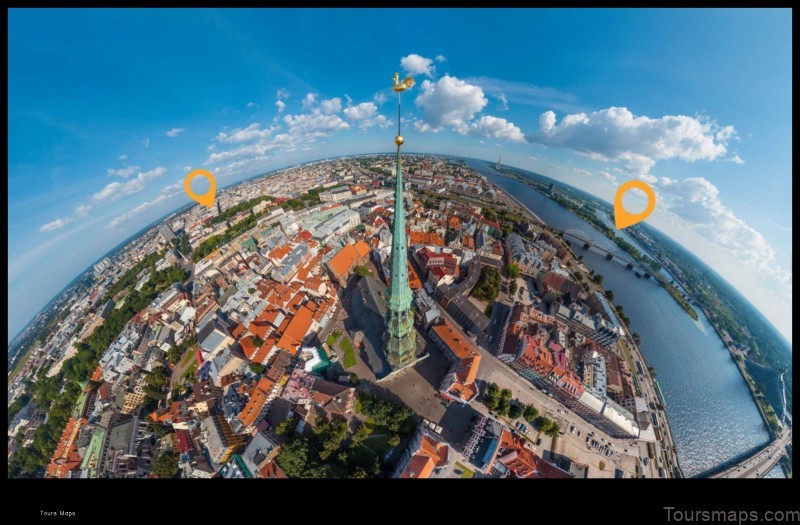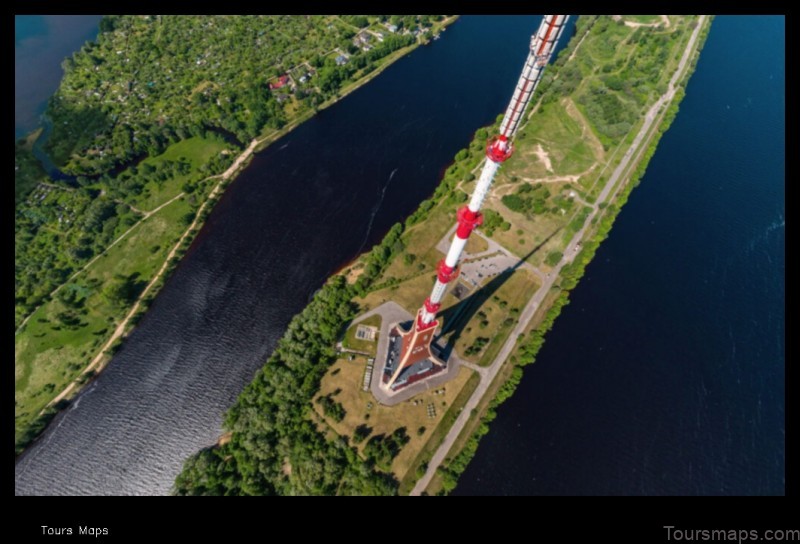
Map of Latvia
Latvia is a country in Northern Europe. It is bordered by Estonia to the north, Lithuania to the south, Belarus to the east, and Russia to the southeast. Latvia has a population of about 2 million people and its capital city is Riga.
The following map shows the location of Latvia in Europe.
The following map shows the major cities of Latvia.
The following map shows the different regions of Latvia.
| Feature | Description |
|---|---|
| Capital | Riga |
| Language | Latvian |
| Currency | Euro |
| Population | 1.9 million |
| Area | 64,589 km² |

II. History of Latvia
Latvia is a country in Northern Europe that has a long and complex history. The first known inhabitants of the region were the Balts, who arrived in the area around 2000 BC. The Balts were followed by the Vikings, who established trading posts in Latvia in the 9th century. In the 12th century, Latvia was Christianized by German missionaries.
In the 13th century, Latvia was conquered by the Livonian Order, a German military order. The Livonian Order ruled Latvia for over 200 years, until it was defeated by the Polish-Lithuanian Commonwealth in the 16th century.
In the 17th century, Latvia was divided between Poland and Sweden. In the 18th century, Latvia was conquered by Russia. Latvia remained part of Russia until the end of World War I, when it declared independence in 1918.
In the 1920s, Latvia was a democratic republic. However, in 1939, the Soviet Union invaded Latvia and annexed the country. Latvia remained part of the Soviet Union until 1991, when it declared independence again.
Since 1991, Latvia has been a member of the United Nations, the European Union, and NATO. Latvia is a prosperous country with a strong economy.
III. Geography of Latvia
Latvia is located in Northern Europe, bordering Estonia to the north, Lithuania to the south, Russia to the east, and Belarus to the southeast. It has a total area of 64,589 square kilometers (24,938 sq mi), making it the sixth-largest country in the Baltic region. The country’s landscape is dominated by lowlands, with the highest point being Gaiziņkalns at 312 meters (1,024 ft) above sea level. The major rivers in Latvia are the Daugava, Gauja, and Lielupe. The country has a temperate climate, with warm summers and cold winters.
IV. Climate of Latvia
The climate of Latvia is temperate, with warm summers and cold winters. The average temperature in January is -5°C (23°F), while the average temperature in July is 17°C (62°F). The country receives an average of 600 mm (23.6 in) of precipitation per year, with most of it falling in the summer months.
The climate of Latvia is influenced by its location in the Baltic Sea region. The country is located on the eastern coast of the Baltic Sea, and its climate is similar to that of other countries in the region, such as Estonia, Lithuania, and Finland.
The climate of Latvia is also influenced by its geography. The country is mostly flat, with a few hills and mountains. The highest point in Latvia is Gaiziņkalns, which is located in the Vidzeme region and has an elevation of 312 m (1,024 ft).
The climate of Latvia is also influenced by its proximity to the Gulf Stream. The Gulf Stream is a warm ocean current that flows from the Gulf of Mexico to the North Atlantic Ocean. The Gulf Stream helps to keep the climate of Latvia warmer than it would be otherwise.
The climate of Latvia is a major factor in the country’s economy. The country’s agriculture is based on the growing of grains, potatoes, and sugar beets. The country’s tourism industry is also based on the climate, with many people visiting Latvia to enjoy the country’s beaches and forests.

V. Demographics of Latvia
Latvia has a population of 1.9 million people, making it the least populous country in the Baltic states. The population is declining, with a natural decrease of -0.4% per year. The median age is 42.7 years.
The majority of Latvians (62%) are ethnic Latvians. Other ethnic groups include Russians (26%), Belarusians (4%), Ukrainians (2%), and Poles (2%).
The official language of Latvia is Latvian, which is spoken by 85% of the population. Other languages spoken in Latvia include Russian (5%), Belarusian (2%), Ukrainian (2%), and Polish (2%).
The majority of Latvians (62%) are Roman Catholics. Other religious groups include Lutherans (25%), Orthodox Christians (10%), and Muslims (3%).
The largest city in Latvia is Riga, with a population of 636,000 people. Other major cities include Daugavpils (182,000), Liepāja (100,000), and Jelgava (86,000).
6. Map of Latvia
Latvia is a country in Northern Europe, bordered by Estonia to the north, Lithuania to the south, Russia to the east, and Belarus to the southeast. It has a population of approximately 2 million people and an area of 64,589 square kilometers (25,028 sq mi). The capital and largest city is Riga.
The landscape of Latvia is dominated by low hills and forests. The largest lake is Lake Lubāns, and the longest river is the Daugava. The climate is temperate, with warm summers and cold winters.
The economy of Latvia is based on services, industry, and agriculture. The main industries are food processing, machinery, and chemicals. The main agricultural products are grains, potatoes, and dairy products.
The culture of Latvia is a blend of Latvian, Russian, and other European influences. The official language is Latvian, but Russian is also widely spoken. The main religion is Christianity.
Latvia is a member of the European Union, NATO, and the United Nations. It is also a member of the Schengen Area and the Eurozone.
VII. Culture of Latvia
The culture of Latvia is a blend of traditional Latvian and Scandinavian influences. Latvians are known for their hospitality, love of music and dance, and appreciation for nature.
The Latvian language is a member of the Baltic language family and is closely related to Lithuanian. It is spoken by approximately 2 million people, mostly in Latvia and by Latvian communities in other countries.
Latvian literature is rich and varied, with a long history dating back to the 16th century. Some of the most famous Latvian writers include Rainis, Aspazija, and Jānis Jaunsudrabiņš.
Latvian music is a fusion of traditional folk music and modern styles. The most popular traditional instruments are the kokle, a three-stringed zither, and the dūdas, a bagpipe.
Latvian dance is a vibrant and expressive art form that is often performed at festivals and celebrations. The most popular traditional dances include the līksme, a circle dance, and the polka.
Latvian cuisine is hearty and flavorful, with a strong emphasis on fresh vegetables, meat, and fish. Some of the most popular dishes include the sklandrausis, a cabbage pie, and the borscht, a beet soup.
Latvian culture is a rich and vibrant blend of traditional and modern influences. It is a culture that is constantly evolving and changing, but that always remains true to its roots.
VIII. Map of Latvia
A map of Latvia is a visual representation of the country’s geography, landmarks, and cities. It can be used to find information about the country’s location, size, and borders. Maps can also be used to plan a trip to Latvia, as they can show you where the different cities and towns are located.
There are many different types of maps of Latvia available, including physical maps, political maps, and tourist maps. Physical maps show the country’s terrain, including its mountains, rivers, and lakes. Political maps show the country’s borders and major cities. Tourist maps are designed to help visitors find their way around the country.
If you are planning a trip to Latvia, it is a good idea to get a map of the country. This will help you to plan your itinerary and make the most of your visit.
Here are some of the best maps of Latvia that you can use to plan your trip:
- Maps of Latvia – This website provides a variety of maps of Latvia, including physical maps, political maps, and tourist maps.
- Maps and Travel Guides – This website provides a variety of maps and travel guides to help you plan your trip to Latvia.
- Maps and Guides – This website provides a variety of maps and guides to help you plan your trip to Latvia.
These are just a few of the many maps of Latvia that are available. By using a map, you can make the most of your trip to Latvia and see all that the country has to offer.
IX. Foreign relations of LatviaLatvia’s foreign policy is based on the principles of Euro-Atlantic integration, international law, and good neighborly relations. Latvia is a member of the United Nations, the European Union, the North Atlantic Treaty Organization (NATO), the Organization for Security and Cooperation in Europe (OSCE), the World Trade Organization (WTO), and the Council of Europe.
Latvia’s relations with its neighbors are generally good. Latvia has a close relationship with Estonia and Lithuania, with whom it forms the Baltic states. Latvia also has good relations with Poland, Germany, and the United States.
Latvia’s relations with Russia are more complex. Latvia and Russia have a history of conflict, dating back to the Soviet occupation of Latvia in 1940. However, in recent years, relations between the two countries have improved. Latvia and Russia signed a bilateral agreement on good neighborly relations in 2007.
Latvia is also a member of the Eastern Partnership, a program of the European Union to promote political and economic cooperation with six Eastern European countries: Armenia, Azerbaijan, Belarus, Georgia, Moldova, and Ukraine.
Latvia’s foreign policy is guided by the goal of achieving full integration into the Euro-Atlantic community. Latvia is committed to the principles of democracy, human rights, and the rule of law. Latvia is also committed to maintaining good relations with its neighbors and to promoting peace and stability in the region.
X. FAQ
Q1: What is the capital of Latvia?
A1: The capital of Latvia is Riga.
Q2: What is the official language of Latvia?
A2: The official language of Latvia is Latvian.
Q3: What is the currency of Latvia?
A3: The currency of Latvia is the euro.
Table of Contents
Maybe You Like Them Too
- Explore Anshun China with this detailed map
- Explore Coahuixtla, Mexico with this detailed map
- Explore Deloraine, Canada with this detailed map
- Explore Daund, India with this Detailed Map
- Bakel, Netherlands A Visual Tour of the Town
